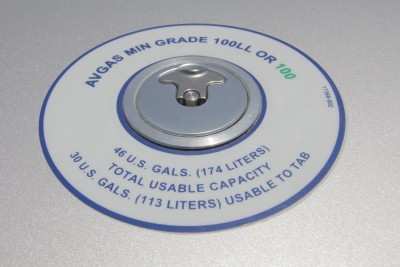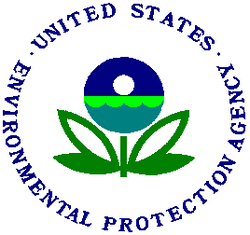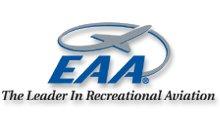Major Oil Companies Named Legal Action, AvGas Coalition
Promises To Fight
If they prevail, and that is hopefully a very big "if," this
could be potentially devastating news for aviation, and
particularly GA, in the state of California. The Center for
Environmental Health (CEH) announced Tuesday it has initiated legal
action against ExxonMobil, Chevron, BP, Shell, AvFuel Corporation
and 38 airport-based suppliers of lead-containing aviation fuel,
for pollution of drinking water sources and/or air around
twenty-five airports throughout California. Under California law,
pollution of drinking water sources above state standards would
require the companies to cease sales of their leaded gas.

“The oil and aviation industries need to know Californians
will not tolerate lead pollution that threatens our health and
healthy environments,” said Michael Green, Executive Director
of CEH. “We expect the industries to take immediate action to
eliminate pollution that endangers children and families who live,
work and play near airports across the state.”
The CEH legal action identifies 25 airports designated in a 2008
EPA report as those with the highest lead emissions in California.
The legal action is directed against the fuel suppliers and
companies that produce fuel sold at those airports. Among the
airports with high levels of lead emitted from the use of aviation
gas (avgas) are Los Angeles International (LAX), Oakland
International, Orange County’s John Wayne Airport, Montgomery
Field and Gillespie Field in San Diego, and others throughout the
state. Van Nuys Airport in LA County, also identified in the CEH
action, is listed by EPA as the airport with the country’s
highest lead emissions. Oakland, John Wayne and Long Beach’s
Daugherty Field are also listed by EPA as among the 12 airports in
the country with the highest lead emissions.

CEH contends that residents near the airports are exposed to
lead through air pollution from planes using leaded avgas, and in
the case of seven of the airports, through nearby drinking water
sources that are polluted by lead from avgas. CEH has notified the
oil companies that produce avgas used at the 25 airports and avgas
suppliers at the seven airports with nearby drinking water sources
that their sales of avgas are in violation of California’s
Safe Drinking Water and Toxic Enforcement Act (known as Prop 65),
which was established in 1986 to protect state residents from
exposures to lead and other harmful chemicals.
Lead is an additive in avgas used in piston-engine aircraft,
usually small planes classified for general aviation or as air
taxis. In 2008, 550 tons of lead were used in the making of avgas.
While lead additives are promoted to boost fuel octane, prevent
engine knock, and improve performance, lead also can impair engine
functioning.
The group cites an article in Flying Magazine which
indicates that lead in avgas can cause spark plug fouling, valve
sticking, piston-ring land contamination and preignition due to
lead deposits on piston crowns. Further, they say alternative fuels
already exist. For example, the group says in its filing that
ethanol-free premium auto gas is an FAA-approved fuel available for
more than 70 percent of current aircraft. The FAA has determined
that aircraft using auto gas are as safe as those running on
avgas.
However, what the CEH fails to mention is that the
GA Avgas Coalition, an industry group formed
to study the issue, concluded that those 30 percent of the
airplanes which require higher-octane, high performance fuel
consume 70 percent of the avgas sold in the U.S. ... they are the
high-performance business aircraft on which so many business people
rely. And after 20 years of research and testing, no true "drop-in"
replacement for 100LL fuel has been found. The statistics are taken
entirely out of context.

The Environmental Protection Agency (EPA) has been considering
lead emissions from aviation gas since 2006, and the agency
released its advanced notice of rulemaking last year. According to
EPA, in 2005 emissions from aircraft using leaded gas accounted for
half of the nation’s air emissions of lead, and the agency
noted that lead emissions from aviation fuel “are also
expected to distribute widely through the environment.” EPA
listed drinking water as a source of human exposure to lead, and
also found that nationwide up to 16 million people reside and three
million children attend school in close proximity to airports where
leaded gas is used.
Under Prop 65, residents near sources of high lead emissions
must be notified of the potential for lead exposures, and emissions
into drinking water above legal limits are banned. In 2008, CEH
reached legal agreements under Prop 65 with Chrysler and the
leading makers of automobile wheel balancing weights to end their
use and sales of lead-containing wheel weights, which had been
identified as a leading source of lead contamination of California
drinking water.
The aviation members of the General Aviation Avgas Coalition are
exploring all options for supporting the named fuel retailers and
suppliers.

EAA, GAMA, and AOPA released a statement in response to the
threatened lawsuit.
"Because the National Airspace System belongs to the people of
the United States and benefits the entire country, Congress has
reserved to the Federal government, through the Federal Aviation
Administration (FAA), the right and responsibility to regulate all
aviation activities in the U.S. The threatened CEH lawsuit in
California raises the specter of a patchwork of state regulations
governing fuels pilots may or may not use in their piston-powered
aircraft.
"Equally important, at the heart of the federal aviation
gasoline fuel standard is safety of flight - ensuring that the
engine of an aircraft in flight does not suffer a catastrophic
failure.
"The FAA, the federal agency with oversight for general
aviation, and the Environmental Protection Agency (EPA), the
federal agency with oversight for environmental concerns including
aircraft emissions, are working with the general aviation industry
- including aircraft and engine manufacturers, fuel producers and
developers, and representatives of fuel suppliers and consumers -
through the FAA's Unleaded Avgas Transition Aviation Rulemaking
Committee (ARC) to address the transition to an unleaded fuel. The
ARC is working through a host of factors, with safety paramount,
for transitioning to an unleaded fuel. These include certification,
production, and distribution, as well as environmental and economic
concerns.
"It is imperative that the issues surrounding the safe and
effective transition to an unleaded fuel be addressed at the
Federal level, and that the FAA and EPA be the agencies that
address those concerns. The potential for this type of legal action
at the state level highlights the necessity of FAA leadership, EPA
involvement, and industry input to continue the safe transition to
a new fuel.

"The lead content of aviation gasoline has already been reduced
by 50% since the federal Clean Air Act was passed. But even as the
general aviation industry works toward an unleaded solution, the
Avgas Coalition has taken steps to further reduce the lead content
as an interim improvement, developing a Very Low Lead fuel standard
that will allow for a further 20 percent reduction in the maximum
amount of lead in the fuel without adversely affecting air
safety.
"Because several of their members are named as potential
litigants, petroleum industry representatives to the GA Avgas
Coalition did not join aviation industry representatives in issuing
this statement."
 Aero-News: Quote of the Day (04.28.25)
Aero-News: Quote of the Day (04.28.25) ANN's Daily Aero-Term (04.28.25): Decision Altitude (DA)
ANN's Daily Aero-Term (04.28.25): Decision Altitude (DA) ANN's Daily Aero-Linx (04.28.25)
ANN's Daily Aero-Linx (04.28.25) Airborne-Flight Training 04.24.25: GA Refocused, Seminole/Epic, WestJet v TFWP
Airborne-Flight Training 04.24.25: GA Refocused, Seminole/Epic, WestJet v TFWP Aero-News: Quote of the Day (04.29.25)
Aero-News: Quote of the Day (04.29.25)







